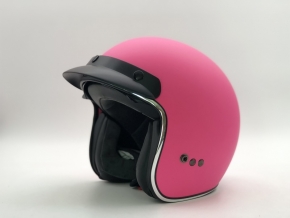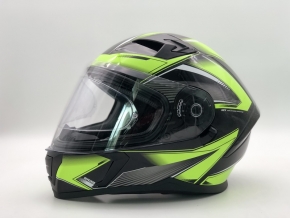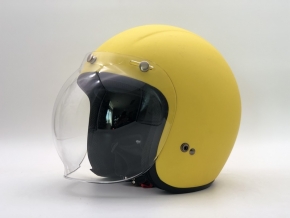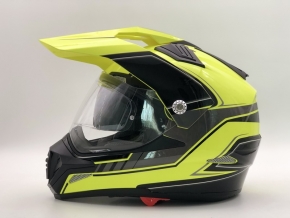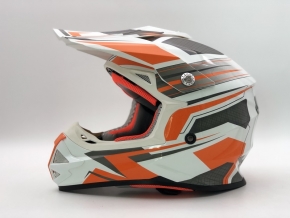For a long time, the motorcycle helmet market has been occupied by carbon fiber, an ultra light material, and major brands have been constantly reducing the weight of the helmet. Through the technical innovation of the helmet shell, it seems that carbon fiber helmets have become the mainstream choice in the industry. And the concept of "the lighter the better, the lighter the more expensive" has been formed among motorcycle users, but is it really true?
In actual use, this kind of lightweight helmet has brought the riders an imperfect experience. The helmet can not be obedient to the outside, but is affected by the wind speed and constantly moves upward, posing a potential threat to riding. The pursuit of light weight while ignoring the stability and protection of helmets may be a major safety hazard brought about by the Fan Tech era.
Therefore, we can see that when some brands launch new products, they are already avoiding a series of safety problems caused by taking lightweight as the product appeal point. For example, AGV recently launched K5 series, whose shell is made of composite fiber and weighs 1390 ± 50g, more than 100g more than the previous carbon fiber helmet standard weight of 1200g. The integrated spoiler design greatly reduces the air flow resistance. The full anti fog design lens is matched with the built-in sunscreen. The lens adopts XQRS (quick disassembly system), which can be quickly disassembled without special tools.
(1) The helmet is not tied. In case of an accident, the helmet will be thrown out without protection.
(2) The use of worn protective lenses affects the driver's vision and hinders safe driving.
(3) Wearing a helmet that is too narrow or too small can easily crush the nerves in the head and cause damage to the body.
(4) The service life of the extended helmet is one year. When the extended helmet is used, its material changes greatly. After aging, the material of the helmet is easy to become brittle and can not protect the helmet as it should.
(5) The picture is cheap. Wear inferior helmets with poor product quality and no production license.
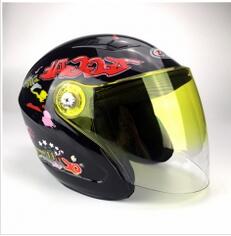
Motorcycle helmet As an indispensable part of the life of a knight, he plays a very important role. When an accident happens, he can "save" you to a considerable extent. I believe that the GB standard, ECE European standard, DOT American standard, and SNELL currently recognized high standards in the industry are all familiar, but how long does it take to replace helmets?
Maybe some experienced knights have heard that they can be replaced in three or five years without any accident.
But is this fact or fiction? How can we count these three or five years?
As a media practitioner who has experienced many years in the motorcycle industry, the test car can be ridden around, but I always think the helmet is a very "private" thing. If I can wear my own, I will wear my own. In addition, I was sent to several motorcycle helmet factories in Guangdong to visit and study at the beginning of my career, and I have some knowledge of the manufacturing process and testing standards of the helmet.
At the peak, a dozen helmets were also lying in his helmet cabinet. But it is true that there is still no accurate answer about when motorcycle helmets need to be replaced.
On this issue, some of my friends who work in the motorcycle helmet factory told me that it should be replaced in five years, and some said that it should be replaced in three years. Others who work for the Motorcycle Safety Foundation said they should replace it within three years.



